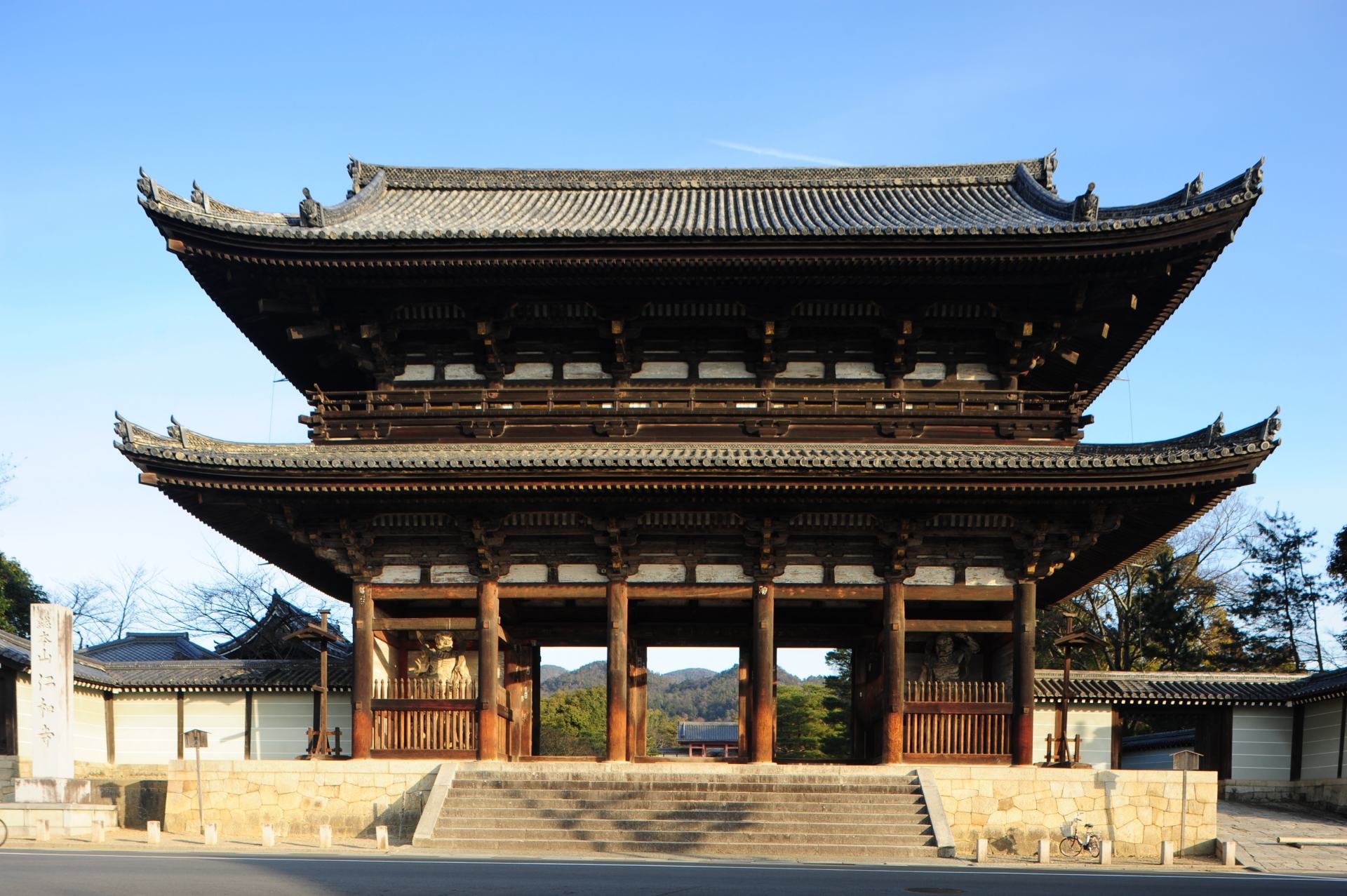進入皇室御用庭院需要門票,庭園每一處都有不同的景很值得一看。

Verified [Verified] denotes information that has been published with confirmation of its owing parties.
Ninna-ji Temple
This is the first temple in Japan where the imperial family has served as the head priest for many generations since its establishment by Emperor Uda. Highlights include the Kondo (a national treasure), which is a relocated palace from the Imperial Palace, and the Goten, which was the Imperial family's private rooms, and other valuable remains of palace architecture.
The head temple of the Omuro school of the Shingon sect of Buddhism, registered as a UNESCO World Heritage Site as one of the "Historic Monuments of Ancient Kyoto" The construction of the temple began in the early Heian period (886) at the request of Emperor Koko, the 58th emperor, and was completed in 888 by Emperor Uda, the next emperor. The temple name, Ninna, comes from the Japanese era name.
Emperor Uda abdicated the throne in 897, and later entered the temple as the first Emperor Uda (Kanpei) of Ninna-ji Temple. The temple was called "Omuro-gosho" (Imperial Palace) because the emperor lived in an omuro (throne room) on the temple grounds, and the temple continued to boast high prestige as a temple where members of the imperial family served as abbots for generations.
The Kondo, located at the back of the temple grounds, is a replica of the Shishinden Hall of the Kyoto Imperial Palace built in the Momoyama period, and was moved here in the early Edo period (1624-1645). It is the only national treasure in Ninna-ji Temple as it is a valuable relic of the palace architecture of that time. Inside the hall, there are statues of Amida Triad (the principal deity), Shitenno (the Four Heavenly Kings), and Bonten (the Goddess of Mercy), and the walls are painted with images of the Pure Land in rich colors.
The Imperial Palace, consisting of the Shinden, Shiro Shoin, and Reimei-den halls, as well as the Kita-niwa (north garden), Minami-niwa (south garden), and teahouse, was the former residence of Emperor Uda. The building was reconstructed during the Meiji and Taisho periods, and is designated as a Registered Tangible Cultural Property of Japan.
The 36-meter-high five-story pagoda is the most eye-catching feature in the spacious precincts of the temple. It was built in 1644, and together with the five-story pagoda of Toji Temple, which was built at the same time, it is known as one of the most famous pagodas of the early Edo period. The pagoda is characterized by its neat appearance, with little difference in the width and height of the roofs of each layer, and its splendor can be felt by standing directly below and looking up. Along with the Omuro Sakura cherry blossoms, which are said to bloom the latest in Kyoto, the pagoda is a symbol of Ninna-ji Temple.
Highlights
-
The court architecture of the palace retains the prestige of a nobility-run temple.
-
The Kondo (Golden Hall) is a national treasure, a relocated palace building from the Imperial Palace.
-
The five-story pagoda, a famous pagoda representing the early Edo period.
-
The Omuro Sakura cherry tree, which blooms late and is low in height.
Photos
-
![The huge Niomon Gate, the entrance to the temple (Important Cultural Property)]()
The huge Niomon Gate, the entrance to the temple (Important Cultural Property)
-
![Kondo, the only National Treasure of Ninna-ji Temple]()
Kondo, the only National Treasure of Ninna-ji Temple
-
![Inside the Shishinden Hall of the Goten]()
Inside the Shishinden Hall of the Goten
-
![Five-storied pagoda (Important Cultural Property) with an impressive neat appearance]()
Five-storied pagoda (Important Cultural Property) with an impressive neat appearance
-
![The Omuro Sakura cherry tree, characterized by its late blooming and short stature]()
The Omuro Sakura cherry tree, characterized by its late blooming and short stature
Reviews
-
Jessie Cheng
-
Tina Lai
皇家御用的寺院果然很氣派,這裡的櫻花非常有名也被稱為御室櫻。
-
Teru Beru
庭院很美,能遇到櫻花開那就更棒。
-
-
Rudy Lee
錯過了櫻花盛開的季節來,。櫻花開起來應該很美
Details
- Name in Japanese
- 仁和寺
- Postal Code
- 616-8092
- Address
- 33 Omuroouchi, Ukyo-ku, Kyoto City, Kyoto
- Telephone
- 075-461-1155
- Holiday
- Open every day
- Hours
- March to November 9:00pm-5:00pm, December to February 9:00 am-4:30pm (last admission is 30 minutes before closure, for both seasons)
- Admission
- Free admission to the precincts, 800 yen for the Imperial Palace Garden, 500 yen for the Reihokan (limited period only), 1,000 yen for the Ryokaku-tei and Hito-tei teahouses (separate admission fee to the Goten is required; reservations are required at least 7 days in advance for groups of 5 or more), 500 yen for special admission to the Omuro Sakura Flower Festival.
- Directions
-
1) 3-minute walk from Omuro-Ninnaji Station on the Kitano Line of the Keifuku Electric Railroad (Randen).
2) 15-minute walk from Hanazono Station on the JR Sagano Line. - Credit Cards
- Not accepted
- Official Website
- Official Website (English)








